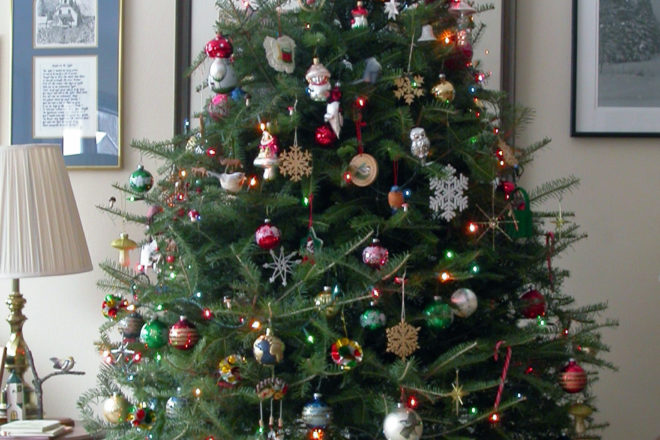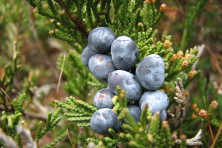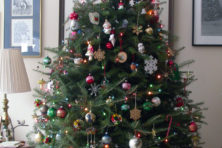Christmas Conifers
- Share
- Tweet
- Pin
- Share

I remember the times when my late husband, Roy, and I would drive to Sturgeon Bay to look for a natural tree to set up in our living room and decorate. We were so busy with autumn chores, organizing the annual Christmas bird counts and producing our holiday cards that we often waited until mid-December to get the tree, and by then, the trees were usually covered with snow and ice.
There are several choices for a natural Christmas tree. A Balsam fir was always our family favorite. Its needles are comfortable to touch, and the fragrance is delightful. In fact, Roy’s mother sewed several small, green bags and filled them with balsam needles removed from the tree at the end of the holiday season. Their wonderful, woodsy, outdoor smell lingered for many years as we kept the bags on the back of our couch.
Another tree that friends took inside and decorated is the white cedar or arborvitae. It also has smooth needles that are easy on the hands. That tree is very abundant in Door County and is easy to harvest.
Some people use a spruce tree to decorate for Christmas. That tree has spiny, sharply pointed needles and is not very comfortable to handle. It can grow into a nice shape for decorating, but we always felt that spruces would not retain needles as well as balsams and white cedars.
Plantation-grown trees must be at least 10-12 years old before they’re big enough to cut and sell for holiday decorating. Fraser firs have a nice fragrance, as well as inch-long needles on sturdy branches that hold up well for hanging ornaments. Their needle retention is very good to last throughout the holidays.
Balsam firs grow faster than Fraser firs and often have more dense branching, which gives them a fuller look. That may make decorating a bit more difficult because the branches are much closer together. This tree is also great for making wreaths.
A variety of firs can be used as Christmas trees. Douglas fir and white fir are some that may be more common in western areas of the country. White pines can also be included, but the branches are weaker, so only lightweight decorations can be placed on those trees.
It’s important with all natural trees to keep them watered so that they don’t dry out, become brittle and lose needles.
We vacationed in the Great Smoky Mountains about 45 years ago and saw a few Fraser fir trees in their natural environment. When we saw them in the tree lots, they were quite expensive. A recent story on a national news program showed these in tree farms in North Carolina, and they’re also grown in Tennessee and Virginia. You don’t see too many of them in the wild because they’re becoming endangered.
The Fraser fir was named in honor of Scottish botanist John Fraser, who explored and studied the environment of the Appalachian Mountains in the 1700s. These trees can grow to a height of 80 feet and attain a trunk diameter of 18 inches. A Fraser fir has often been chosen as the White House Christmas tree and placed in the Blue Room.
An eighth-grade class of students studied the importance of this tree to North Carolina’s economy and history and nominated it to be the state’s official tree. The state legislature adopted the motion in 2005. Strangely, the students nominating the Fraser fir attended school in a small town called Spruce Pine, North Carolina, northeast of Asheville.
During the first several winters when we lived in our new home, we set up our used Christmas tree – along with others we’d collected – to create a windbreak along the west side of the bird feeders in January. The dense foliage of balsam firs reduced the strong northwest winds and gave hiding places for the small songbirds when predators flew into the yard. Now there is a row of white cedar trees permanently shielding the feeders.
A recent TV news story talked about scientifically producing a Christmas tree that is perfect in shape and size. I remember a phrase our dear friend Carl Scholz often said: “Perfect trees are for perfect people.”
I wish happy holidays to all of you!


